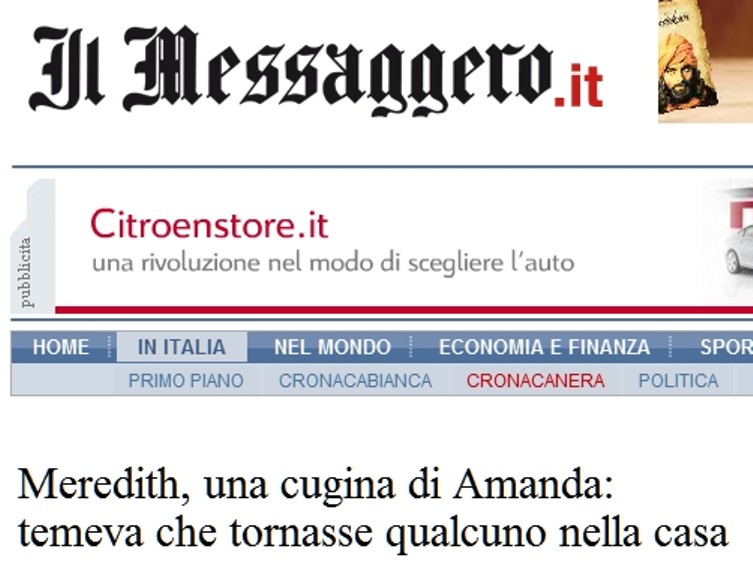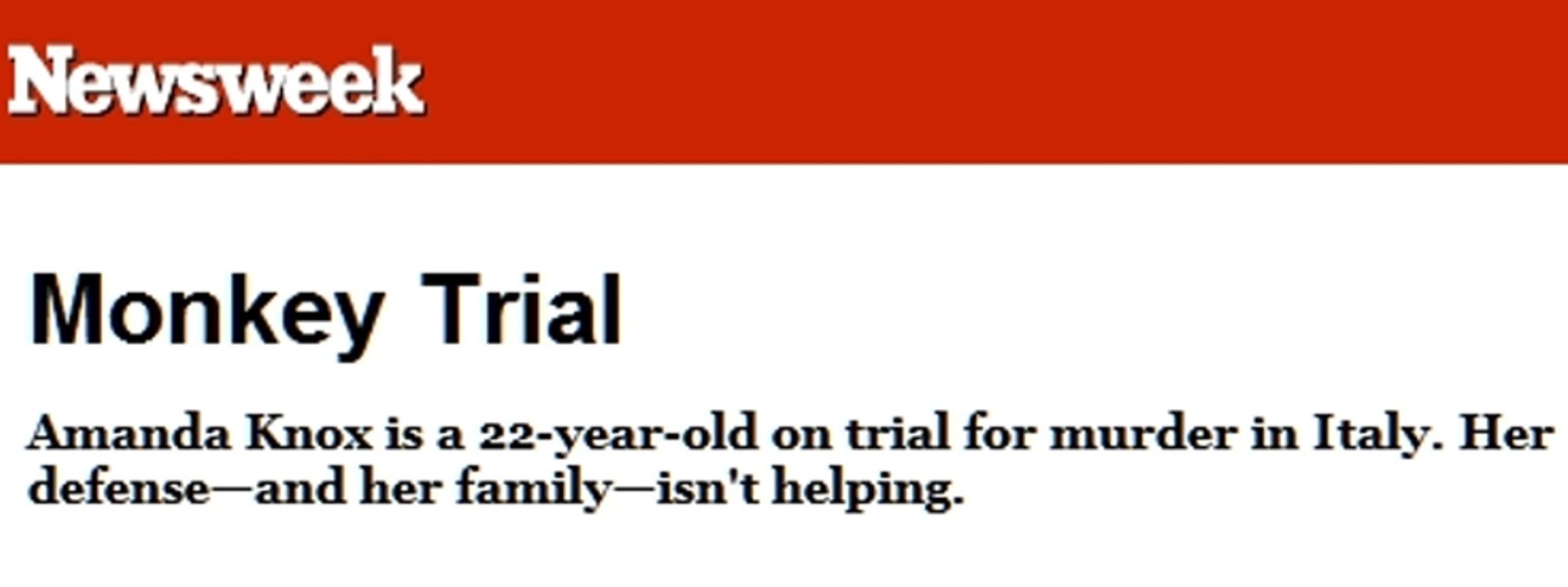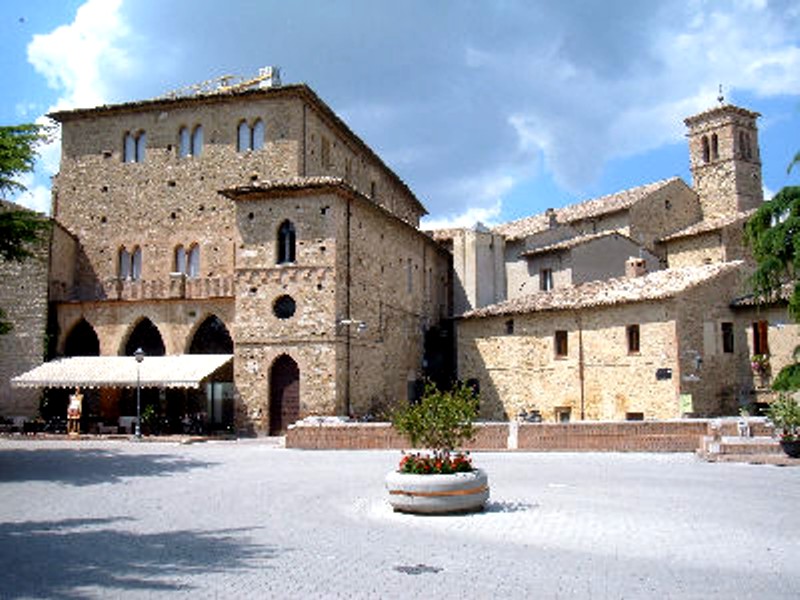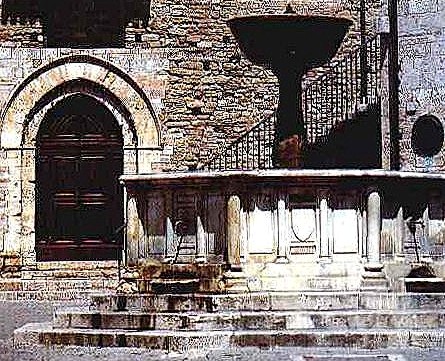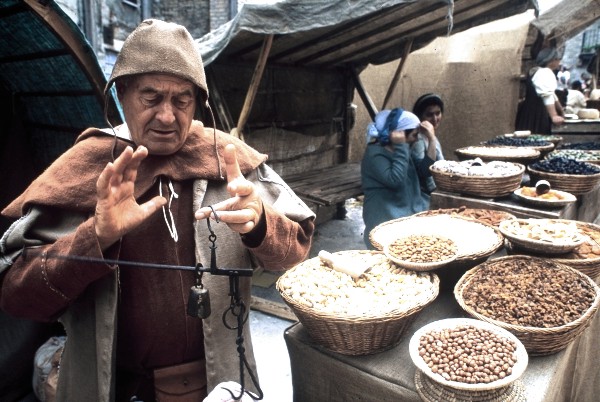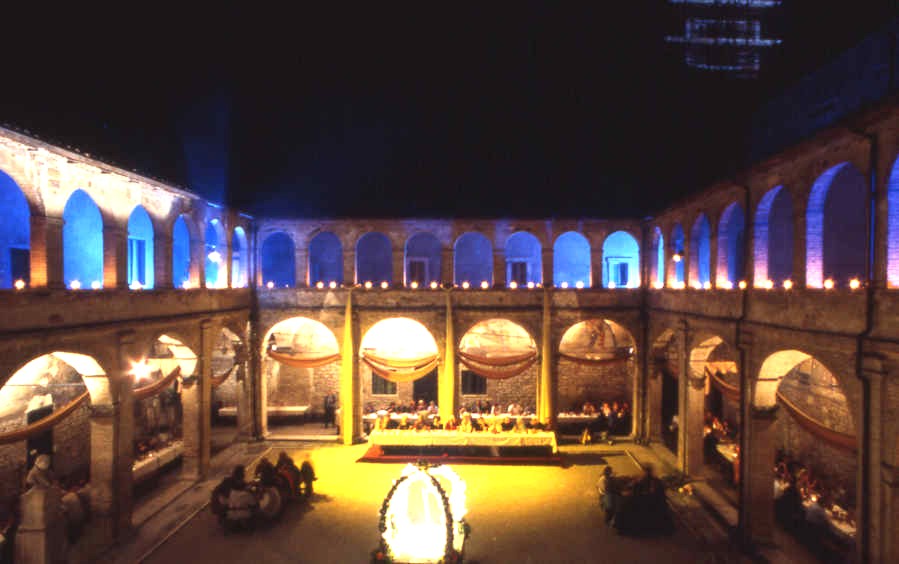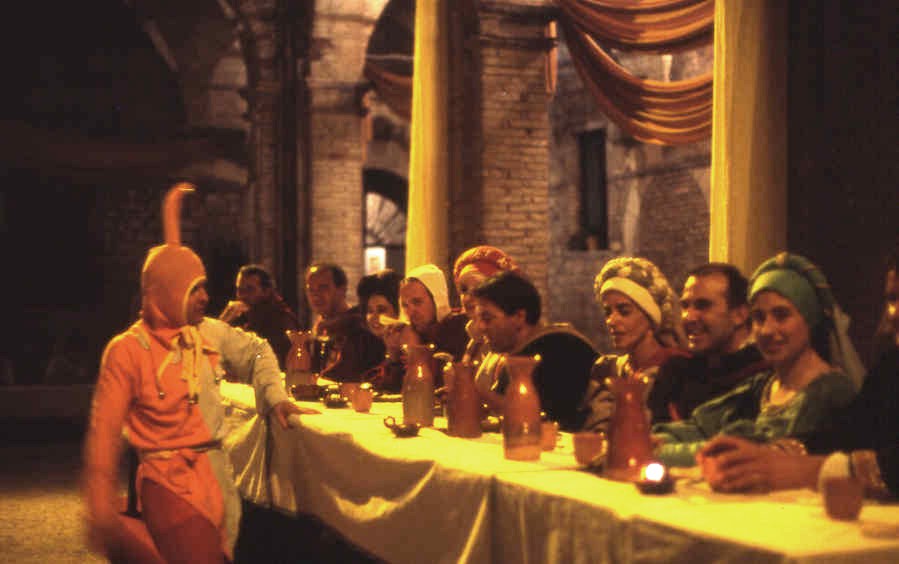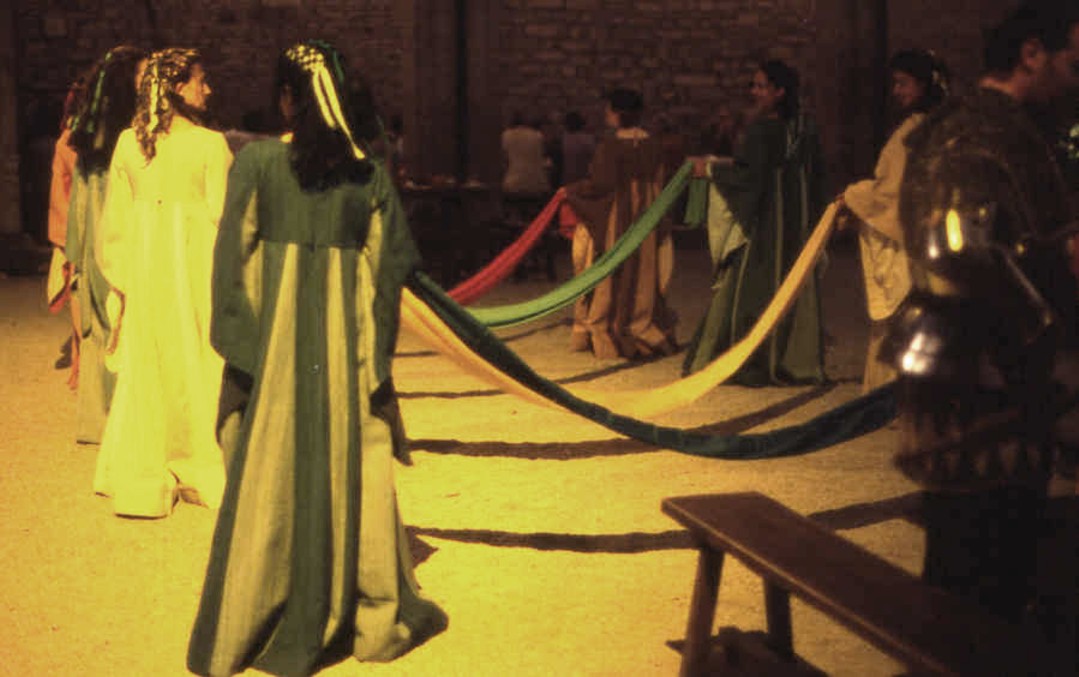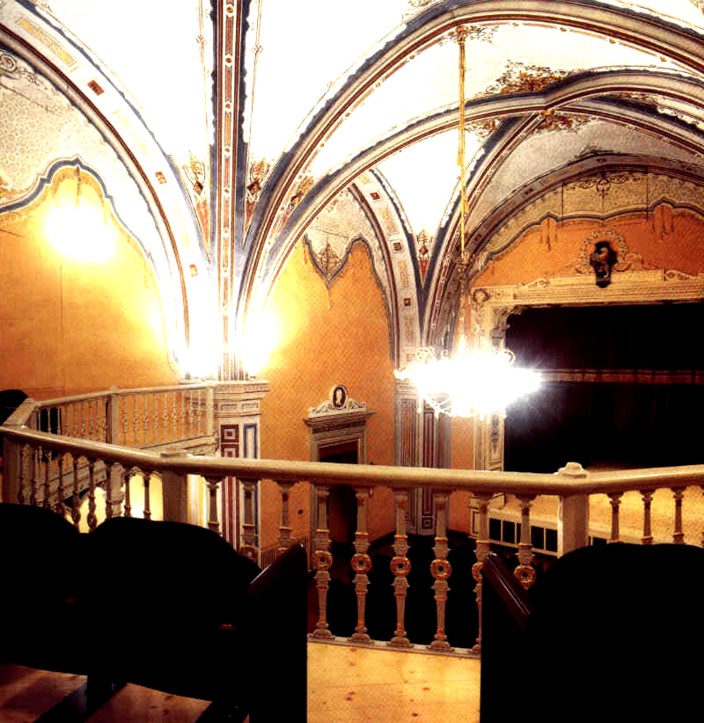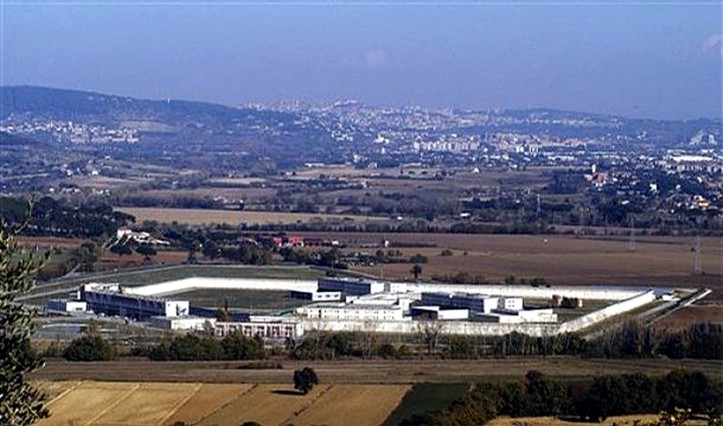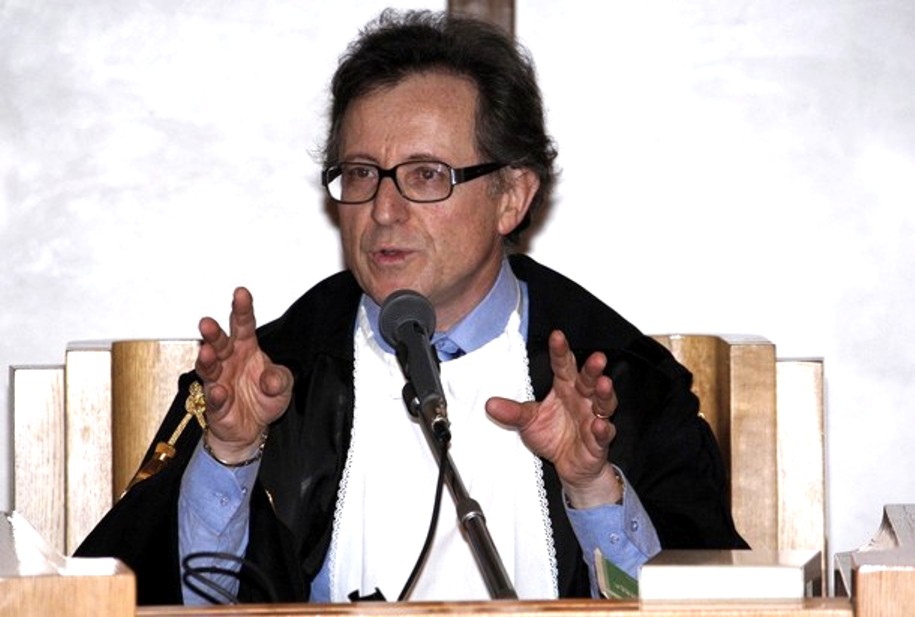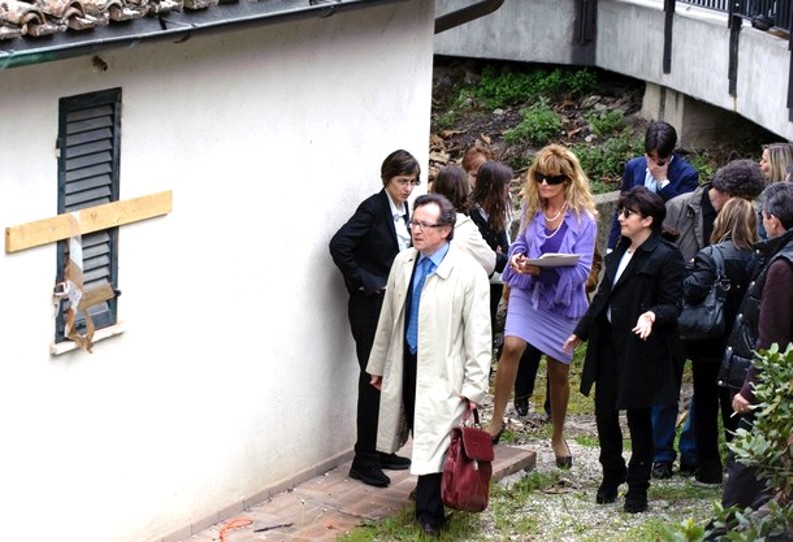
Headsup: To those many lawyers amazed that Knox did not get on the witness stand to head off a certain re-conviction: the best guess among Italian lawyers is that Knox's own lawyers feared ANOTHER calunnia charge if she repeated the crackpot and highly disprovable claims that she was tortured. The tough calunnia law is primarily a pushback measure against mafia meddling which is widely suspected in this case.
Friday, July 17, 2009
Trial: Il Messagero Describes Testimony Of Knox Relative From Germany
Posted by Peter Quennell
Click above for the original report in Italian on the testimony of Aunt Dorothy.
The woman, who lives in Germany, said she listened to Knox on the phone after the murder, and found her “scared and confused.”
Dorothy claimed to have suggested to Amanda to come to Germany, but she said ‘no’ because she wanted to be of help to the police and answer questions.
The relative of Amanda also said that the young American, before being arrested, wanted to “meet the father of Meredith to console him and tell him what she knew.”
Other defense testimony today will focus on the mobile phones, the effects of smoking marijuana, and the nature of the knife Sollecito carried at all times.
Thursday, July 16, 2009
Attitudes Seem Hardening In Italy Against Knox Campaign And Defense
Posted by Peter Quennell
Increasing negativity is now being reported.
Lack of respect for the victim and for the police, investigation, prosecution, and in some respects Italy itself, do seem not to be paying off. Some of our commenters in the posts below suggested that the behavior and attire of Knox’s family in Perugia seemed a seriously wrong move.
Our posters and readers in Italy and the Italian media report pretty much the same perception. In Perugia amd Italy generally, sympathy and goodwill seem perilously close to empty. Now Newsweek reflects this deteriorated situation.
1) On behavior around Perugia, attire in court, and those photographs.
There should be a basic set of rules when on trial for murder: Don’t antagonize the prosecutor and judge. Dress appropriately in court. Don’t let your family pose for photos in front of the crime scene…
Two weeks ago, Ashley Knox defied the prohibition on minors attending sex-related hearings and had to be removed from the proceedings. Then Deanna Knox showed up in a red, white, and blue ensemble, complete with hotpants, on July 4.
2) On the strength of the case the prosecution presented
The prosecution took five months to make its case, which relied heavily on circumstantial evidence, including Knox’s lack of alibi, her behavior after the murder, and contradictory statements she and her co-defendant, Rafaelle Sollecito, made during questioning.
Newsweek quotes Alessandra Batassa, a Rome-based criminal lawyer who defends murder suspects, as saying that Italian courts have handed down guilty verdicts on less evidence than this. And an unnamed Perugia judge is quoted as saying “Lies can discredit the suspects as much as hard evidence.”
3) On the muddled wrapping-up of the defense part of the case
The Knox-Sollecito defense team plans to wrap up their case this weekend even though they have presented only a handful of witnesses. Knox’s original witness list contained 35 names but defense lawyers have retracted 23.
Sollecito’s chief forensic consultant walked away from the case (and stuck lawyers with a 50,000 euro bill) in May because he disagreed with the defense strategy.
The witnesses who actually testified for the defense caused even more confusion: two forensic scientists placed on the stand contradicted each other. (Sollecito’s expert told the jury that Kercher was killed by a single assailant from behind; Knox’s said Kercher was killed from the front.)
Among the lawyers, chaos reigns: Sollecito’s lead attorney, a parliamentarian in Prime Minister Silvio Berlusconi’s party, has not been in court for weeks, and his other two attorneys have dismantled their joint practice during the course of this case.
4) And on very important prosecution evidence still uncontested
Nobody has testified about Knox and Sollecito’s whereabouts that night. Nor has the defense broached the topic of the mixed DNA in the bathroom the girls shared. Legal experts who follow this case have suggested that blood evidence cannot be dated and therefore could have been left weeks before the murder.
But when Knox testified in her own defense in June, she conceded that there was no blood in the bathroom the day before the murder, effectively dating those blood stains to that night.
Wednesday, July 15, 2009
The Significance of This Small Italian Town To The Case?
Posted by Peter Quennell
Bevagna, a little village about half an hour south of Perugia.
This is where the presiding judge for the trial Judge Giancarlo Massei comes from.
A quiet enough place for maybe 350 days of the year. But on those other few days, late in June, the most famous medieval festival in Italy, Mercato delle Gaite, takes place.
One description in Italian. A quick translation here.
The Mercato delle Gaite is the most important re-enactment of medieval life that takes place in Italy. The name is inspired by the division of Bevagna into four districts (gaite appunto).
Along the narrow streets and in the picturesque corners, the entire population of this charming town is trained in works of crafts, runs markets typical of the period, and operates taverns where you can taste dishes prepared according to the ancient medieval recipes.
The evocation is enhanced with shows, concerts, exhibitions and conferences, along with archery to cheer up the already lively evenings. Drawing inspiration from the practices described in ancient documents, medieval Bevagna evokes an atmosphere of crafts, sounds and movements largely forgotten today.
In the small shops there are are pastry makers, potters and blacksmiths and dyers, and other skilled craftsmen.
There are also banquets and races, and the medieval seminars sound like very serious stuff. There is not much about it in English but the festival does have a new Facebook page here.
It sounds like something that Meredith would have really enjoyed.
And below, here is one of the many YouTubes on the Mercato delle Gaite festival in Italian.
Tuesday, July 14, 2009
Italy Is The Home Of Four Of The World’s Ten Oldest Universities
Posted by Peter Quennell
The list includes Bologna (the world’s oldest), Medina, Padua, and Naples.
France has three of the oldest, England two, and Spain one. Perugia’s university was founded in 1308, Italy’s seventh after Siena and Rome.
This is the balcony and stage of the university’s Old Wisdom theater, built in the late 1300s, and used to stage operas, instrumental music, and plays. Perugia has nine such theaters.
The University for Foreigners was assimilated into the main university back in the 90s for administrative reasons. So in effect Meredith (Italian and politics) and Amanda Knox (Italian) were both enrolled here.
Perugia University has campuses throughout Umbria. The heart of the Perugia campus is down those steps below from where Sollecito lived, though its various departments are very spread out.
His own department, computer sciences, is below the walled city a kilometer or two to the west, a quick drive down from his place.
The Next Defence Witnesses If The Trial Resumes This Friday And Saturday
Posted by Peter Quennell
Judge Massei is still recuperating from pneumonia.
However he himself has indicated that it should be possible for the trial sessions for Friday and Saturday to happen on schedule.
A few days ago the Corriere website listed these witnesses as being those next on the defense agendas.
- Professor Adriano Tagliabracci (defence for Sollecito) on the forensics
- Professor Francesco Vinci (defence for Sollecito) on the forensics
- Professor Carlo Caltagirone (defence for Knox) on the forensics
- Mr Walter Patumi (defence for Knox) on the forensics
- Knox’s Aunt Dorothy from Germany (defence for Knox, a character witness)
- Francesco De Robertis (defence for Sollecito, a character witness)
- Karen Green ( from Meredith’s UK bank from which someone withdrew 20 Euros)
- Juba Louerguioui (we believe he may be a North African resident of Perugia)
Monday, July 13, 2009
Trial: Nick Pisa Reports Knox Sisters’ Macabre Posing Where Meredith Was Killed
Posted by Peter Quennell
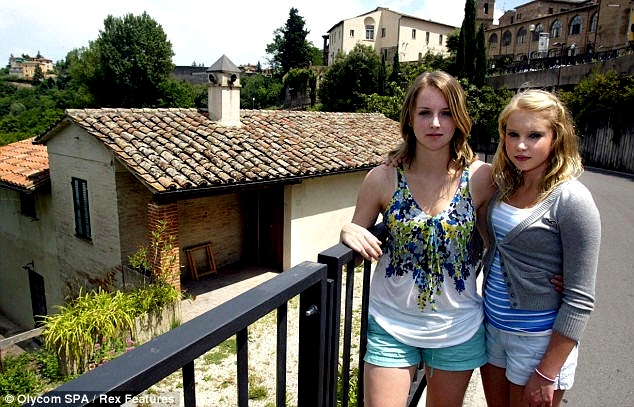
Deanne, left, and Ashley Knox at the cottage in Perugia where Meredith Kercher was killed
From Nick Pisa’s report in the Daily Mail today.
The sisters of murder suspect Amanda Knox have posed for photographs outside the cottage where British student Meredith Kercher was brutally killed.
Americans Deanne and Ashley Knox were taking part in a photoshoot for an Italian magazine.,,,
Francesco Maresca, the lawyer representing Meredith’s family, said: “˜Amanda Knox’s sisters posing for photographs outside the house where the murder took place is macabre.
“˜I accept that the Knox family has a right to give interviews. But there are other places where they could have been photographed. Outside the prison where Amanda Knox is being held would have been better.’
The behaviour of Knox’s sisters was criticised earlier in the case when they attended court wearing shorts and “˜revealing’ tops.
One observer in court at the time said: “˜It’s not what I would choose to wear if my sister was in court accused of a sex murder. It was very revealing.’
Saturday, July 11, 2009
It Is The Jury That Ultimately Matters: How They May Be Seeing The DNA Here
Posted by Fiori
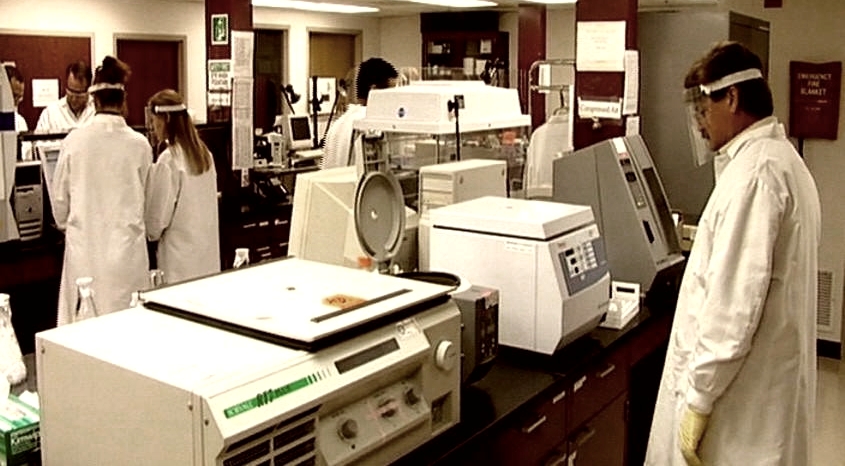
Example of well-equipped Italian DNA lab
Ciao! Posting again from Florence.
Nicki and Kermit have already done amazing work here and here in explaining the hard facts of the DNA evidence.
This post is about perceptions and about what the judges and jury might - might - now be thinking, now that those facts are presented and some of them contested.
DNA evidence is notoriously hard to present and argue before a jury. It is not only in the trial against Amanda and Rafaelle that one finds problems, ambiguities and different interpretations of the validity and reliability of DNA, this is the same in many criminal trials.
Standardization of DNA testing procedures got an enormous boost by the unforeseen “accident” in the OJ Simpson’s trial, where the jury, according to all scientific authorities, failed to recognize the DNA evidence properly. Since than the overall public understanding of DNA has been increasing, and jurors and others agents have earned a familiarity with handling DNA in criminal trials. All this suggests that it is generally getting easier for jurors to understand when and how DNA is significant in a trial.
It is of great importance to underline that the jury is the crux of every case: No matter what Dr. Stefanoni knows and how she may have handled the DNA samples, it is the jury, this particular selection of individuals, which has to make sense of the testimonies, and form an understanding of what the DNA samples tells about the murder of Meredith and the possibly involvement of Amanda and Rafaelle (and Rudy). I emphasize this:
- Jurors are not a scientific committee, and the way which a jury understands DNA differs considerably from a professional, scientific understanding of DNA
- Jurors’ understanding of DNA is highly situational; i.e. it is heavily influenced by how, when and by whom DNA material is presented during the trial
- Jurors build their comprehension from context, meaning that a jury does not base their understanding upon systematically selected information about DNA, but forms an opinion based upon an interrelation of scientifically based information and the circumstances of the present case
Findings from the US and UK system of justice
What characterizes jurors’ judgments of DNA material in criminal trials? It is usual to expect that the more scientifically complex a piece of evidence is, the more difficult is it for a jury to comprehend, but from studies in UK, US and Australia several other things are known:
- Among jurors who were aware of DNA profiling evidence before their participation in the researched trials, expectations for the evidence in determining the guilt or innocence of an accused were high, and these expectations were largely confirmed by the jury members experiences of the trial itself.
- Juror comprehension of DNA evidence is not solely dependent on the scientific complexity of the evidence. If the evidence is presented clearly in court, if the expert testimony is consistent, if the defences do not present contrary interpretations of the DNA evidence, and the case is otherwise circumstantial, then jurors seem to manage a fair understanding of the science and weight it significantly in case material.
- The strength of the defence challenge may depend on the coherence and grounding of an alternative explanation or conclusion drawn from the DNA. Meaning: it is NOT generally so, that IF a piece of DNA evidence is NOT contradicted by the defence, then it is easier for a jury to comprehend DNA evidence. HOW a jury interprets DNA evidence depends upon the context of the PRESENTATION of the evidence.
Research into US trials reports that jurors mostly are much more skeptical toward DNA evidence than statistics gives reason for. The jurors often “incorrectly aggregate separately presented probabilities and afford probabilistic evidence less weight than would be expected [by experts]” and “their background beliefs about the possibility of laboratory errors and intentional tampering affects the weight participants afford a DNA match report.”
A juror’s interpretation of expert testimonies is highly influenced by the credibility they assign to the legal and scientific system; i.e. all the institutions involved in a trial: the police, the legal system, the forensic police, and scientific institutions in general.
The point made here is that jurors and legal systems have “historical memory” so the result of one trial influences the outcome of another: Thus, it is possibly that the OJ Simpson case and the many faulty convictions based upon DNA “˜evidence’ has produced a overt negative attitude towards DNA in the US, which is not to be expected to be the same in Italy.
Another conclusion, also from research within the US: Cognitive errors favoring the defence were more prevalent than errors ones favoring the prosecution. This piece of research examines how jurors’ evaluates that part of the DNA testimony which involves probabilities and statistics. And as this touches upon core questions brought up in the case against Amanda and Rafaelle, I will quote in length from the paper.
- The paper, which studies the outcome of several (murder) trials - concludes that “some jurors showed susceptibility to classic (defence) fallacies in interpreting conditional probabilities, and the jurors as a group were not overwhelmed by testimony from a prosecution expert that “˜more than 99.98% of all Caucasians would be excluded’ by the DNA match.
Most jurors accepted a defence criticism of this computation. Moreover, it appears that many jurors were inclined to agree with the defendant’s overstated argument that because dozens of men in the area might have DNA types consistent with those of the robber, the match with the defendant’s DNA was worthless. A smaller number seemed to commit what has been called the “˜prosecutor’s fallacy.’ These jurors did muddle up the proportion of the general population that would be excluded by a DNA test, and the probability that the defendant was the source of the crime-scene DNA.
On balance, these findings do not indicate that jurors generally were unduly impressed by the prosecution’s DNA evidence. Consequently, our results challenge the legal argument that DNA evidence should be excluded because jurors are prone to overvalue such evidence.”
So, measured in relation to the expert testimony actually given in court, this research found that jurors made misunderstandings and misinterpretations biased BOTH ways. The research did not find jurors to be “˜unduly impressed’ by prosecutions experts testimony, but instead being “˜susceptible’ in favour of the defence.
But other research indicates that some jurors are being too impressed by the DNA evidence or mislead by the statistics presented in court.
Research from UK and US, states that “a number of convictions which have relied on DNA evidence have been overturned on appeal on the basis of misdirection of the jury regarding the statistical basis of the test and its results. In particular, juries are often awe-struck by the enormous values of random occurrence ratio with which they are presented by the prosecution experts. The factual significance of these large numbers is often misunderstood and misrepresented by barristers and judges, leading to unsafe convictions.”
Then, not only the jurors, but the legal actors more widely have problems with understanding how the statistical dimensions of DNA evidence works. The point of the statistics is, that identifying the DNA markers can be misleading if identification of the suspect occurs on behalf of “˜random occurrence ratios’ ““ i.e. the suspect is identified in random by her DNA (similar to how fingerprint identification works).
Identification on behalf of DNA must relate to the demography of the area where the crime took place, as well as the family background of the suspect. Meaning that statistics can be misleading if identification is not supported by additional information (where much exists in the trial against Amanda and Rafaelle). Dr. Stefanoni has repeatedly argued this point in court, explaining why Amanda’s DNA is Amanda’s, and Rafaelle’s DNA is Rafaelle’s, and not a “˜random’ person, like an unknown friend of Rudy’s.
From research into the working of the US and the UK legal systems, it must be clear that most of the news-reports from the US about the murder of Meredith Kercher tend to reinforce a common deficit in knowledge on how to interpret DNA evidence. A shame that.
Also worth mentioning is that the OJ Simpson trial is not the only one where “˜scientifically’ obvious DNA evidence have been disregarded by a jury; this also seen in cases where there presented a lot of other circumstantial evidence supporting the DNA material.
And that different interpretation (prosecution and defence) of DNA material does not in itself blur jurors comprehension and prevent an unanimous understanding of the significance. Contrary, controversies over DNA can serve to clarify a juror’s understanding of DNA.

Example of well-equipped Italian DNA lab
Likely differences under the Italian system of justice
These results from research into the US/UK type of legal system should be discussed in relation to the working of the Italian system. And there are, in this perspective, significant differences.
In Italy, a jury consists of 6 lay persons and 2 professional judges. It is highly likely that the participation of 2 professional judges influences how the jury perceives and discusses DNA and other complex scientific matters. The above quoted research into fallacies of comprehending DNA evidence can only support the view that it is a strength of the Italian system that professional judges are represented in the jury.
Also, the Italian trial system, where parts of evidence are presented and assessed by multiple judges in many pre-trial hearings, also marks a difference vis a vis the US system. Every (pre-) trial adds to jurors possibility to comprehend DNA material correct (”˜correct’ in relation to understanding what is actually testified in court, not “˜correct’ in relation to assessing the significance of the DNA material as evidence).
As referred to above, pre-trial experiences also influences how jurors interpret DNA testimony.
Then education, schools and general cultural education (”˜bildung’ in German), cultural habits (for example if criminal trials are broadcast or not, and if they are watched widely or not) will without doubt influence how jurors comprehend DNA evidence. And of course so will criteria used by the court for selecting the actual jury influence the outcome; for example if it was considered important that jury members demonstrated ability to understand complex scientific arguments.
Generally, European comparative test shows that primary education in Italy are in the upper middle, and Italy has very good universities and strong academic traditions, and ““ not the least - a long and proud tradition in science from Leonardo da Vinci and onwards.
These conditions will influence the jury’s assessment of DNA evidence presented in the trial against Amanda and Rafaelle, and we can expect that the jury will demonstrate a fairly accurate understanding of the different testimonies from (a.o.) Dr.Stefanoni and Dr.Torre, and a fairly accurate understanding of DNA technology. Though, how the jury will make sense of the scientific facts in the actual circumstances (what it tells about who murdered Meredith) are not obvious.
Scientific references to the quoted papers are listed in my comment below.
Friday, July 10, 2009
The Birthdays of Amanda Knox And Of Meredith
Posted by Peter Quennell
The ANSA news-service provided this description of Amanda Knox’s birthday party in Capanne Prison, seen above.
Meredith was born in December 1985, in Southwark in south London and she would now have been 23 and a half - and would have just graduated from Leeds University.
Her whole life would have been ahead of her. Instead, back in December not one media outlet acknowledged her 23rd birthday.
The Knox and Mellas families have still not reached out to the Kercher family in their grief, and have seemingly avoided face-to-face meetings in the court.
Staged events like this birthday party contribute to a callous and insensitive aura in many eyes that they might do well to resolve
Thursday, July 09, 2009
The Presiding Judge Giancarlo Massei Is Reported To Be Unwell
Posted by Peter Quennell
The kindly but very sharp Judge Massei apparently has contracted pneumonia.
We wish him well. He is winning high praise for conducting a fair and very careful trial.
Court sessions are canceled for the rest of this week, and possibly for next week as well, which would mean the next trial session would be on September 14.
Below: Judge Massei and the jury at Meredith’s house 18 April. And Italy-based Andrea Vogt has a good overview of where things stand in the case right now.
Wednesday, July 08, 2009
The Other Long-Term Shadow That Hangs Over Perugia….
Posted by Peter Quennell
Those beautiful mountains. The Appenines.
As the two main tectonic plates that constitute most of Italy separate out, those mountains - and Perugia - are slowly sinking.
Here is a good short description of the plate tectonics that are involved.
And the earthquakes that result can be real killers. In April, you may recall, over 150 people died in the earthquake around L’Aquila, as the G-8 Summit leaders are now being reminded.
L’Aquila is about a 90-minute drive south-east of Perugia. Things can be done to make old buildings more earthquake-proof, but sadly, the old town of Perugia still runs great risks.

